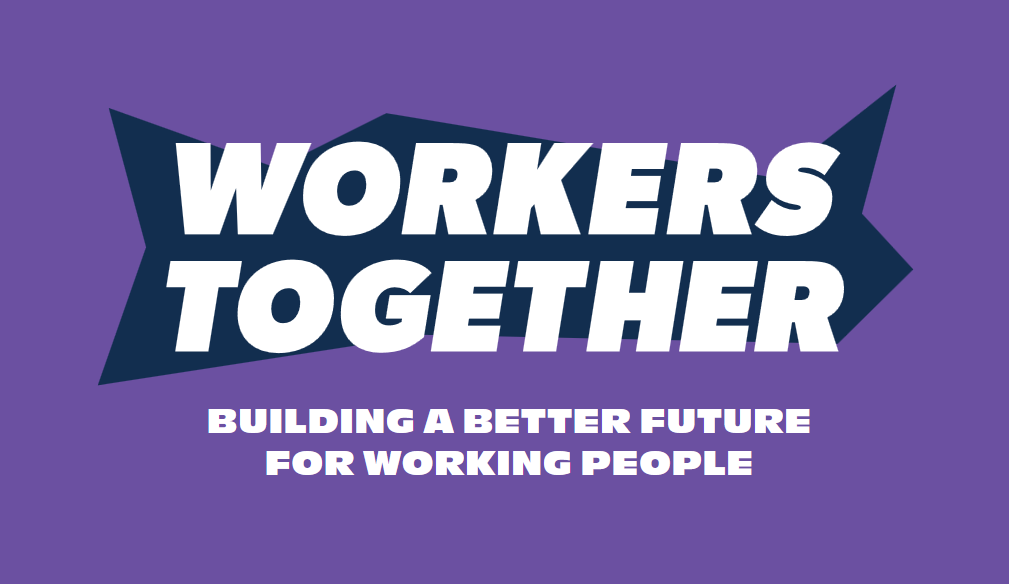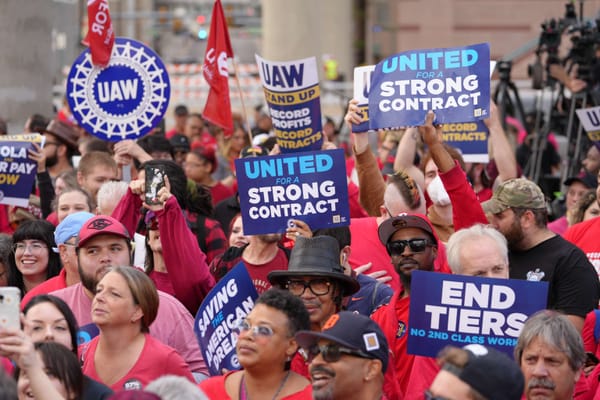This week, the federal government began to force public servants back to their offices for part of the workweek. The government’s policy entails an end to the widespread remote work begun during the pandemic for most of the federal public service, followed by a transition to a hybrid model of two to three days per week in the office by March.
The Public Service Alliance of Canada (PSAC), the Professional Institute of the Public Service of Canada (PIPSC) and the Canadian Association of Professional Employees (CAPE) — unions representing the affected workers — have all publicly opposed the government’s unilateral action. PSAC in particular has been harshly criticizing the return to work process since the Treasury Board first began instructing individual departments to develop hybrid work plans this past summer. According to Treasury Board president Mona Fortier, inconsistencies and a perceived lack of fairness across departments compelled the government to introduce a uniform policy in response.
PSAC, meanwhile, claims that many workers, particularly those hired since the switch to remote work during the pandemic, don’t even have offices, while others are scrambling to find child care amid a rushed directive that afforded no union input.
The unions are particularly incensed by the return-to-work policy because the parties are presently in bargaining — a round of negotiations that hasn’t proceeded well. On December 21, PSAC filed a complaint with the Federal Public Sector Labour Relations and Employment Board over the government’s hybrid work plan. Workers at the Canada Revenue Agency will conduct a strike authorization vote beginning at the end of the month after a year of difficult and unsuccessful negotiations. Other union members in the federal public service could soon follow them. Remote work, along with wages, is a central issue.
The battle over remote work in the federal public service is a sign of things to come. The right to choose remote work is increasingly popular among workers. Employers, on the other hand, are mixed. While some welcome the chance to save on overhead costs, others fear the growth of worker autonomy and the prospect of unsupervised workers committing “time theft.”
With many private sector employers having forced their workers back to the office, unions across sectors may face ongoing challenges negotiating remote work provisions. But it is nevertheless clear that remote work, or the desire for it, is here to stay. How unions respond now will shape future work-from-home policies.
Employer Pushback
If the pronouncements of overlords at many supposedly cutting-edge technology companies are any indication, the employer push to end the remote work experiment may be gaining steam. Such ‘disrupters’ as Elon Musk, CEO of Tesla, and Reed Hastings, CEO of Netflix, have both come out strongly against the continuation of work-from-home arrangements. After acquiring Twitter, Musk moved to impose a return to the office on staff (those who he didn’t fire outright), but has since softened his tone following broad threats of resignation. Reed, on the other hand, characterized remote work as “a pure negative” as far back as September 2020.
Many of the celebrity CEOs, public commentators and management gurus calling for a return to the office do not themselves practise what they preach, unsurprisingly. Many have been called out for either not having an office (let alone a boss telling them what to do, for that matter) or not regularly interacting with staff or other colleagues — one of the purported reasons necessitating the end of remote work.
It is fashionable among return-to-office proponents to wax poetic about an ephemeral ‘office culture’ that has suffered or disappeared because of remote work. This illusive ‘office culture’ is supposedly key to unlocking the latent productivity that’s being squandered while workers are autonomous at home. Yet what exactly such ‘office culture’ entails is difficult to pin down. Undoubtedly, in some instances collaboration among workers is necessary or preferable, but whether or not interactions need to take place in person is a separate question.
Moreover, debates concerning the relationship between remote work and productivity tend to take on a technocratic tone. Managers or management-side lawyers opposed to remote work have been at pains to demonstrate an overall drop in productivity since the turn to working from home. Unions and workers, on the other hand, may find themselves in response attempting to justify continued remote work by characterizing themselves as more or equally productive outside of the office (which there is also evidence to support).
In either case, productivity — a notoriously difficult measure to begin with — is positioned as a neutral good, something both bosses and workers equally pursue though they might disagree over how best to increase it. In actuality, workers and bosses are engaged in what the sociologist Michael Burawoy called “production games,” wherein the latter tries to extract as much surplus as possible, while the former searches for ways to evade management, while maximizing their autonomy and lessening their workload. Managerial practices that we might characterize as more ‘enlightened,’ such as open-office designs or leisure activities at the workplace, are ultimately oriented to the same objective: increasing the value that bosses extract from workers.
It’s not that workers are inherently lazy. Rather, it’s that workers and bosses (along with their hired managers) have diametrically opposed interests at work. Workers have no material interest in increasing the surplus value extracted from them by management.
So-Called ‘Managerial Rights’
The physical space of the workplace is no doubt essential for many workers, from those in blue-collar trades to those performing essential public and private services. However, for a growing number of people, work takes place in front of a computer — the office is ‘necessary’ only as a space of surveillance.
This is precisely the point. The fight over remote work pits managements’ desire for control against workers’ struggle for autonomy. Through maintaining a right to remote work, workers seek to limit management’s ability to control the structure and pace of work, to surveil and monitor performance, and to impose sanctions on workers it determines inefficient.
By some accounts, the worker autonomy of remote work has even exposed the superfluousness of much modern management. As Ed Zitron, writing in The Atlantic, puts it, “As a society, we tend to consider management a title rather than a skill, something to promote people to, as well as a way in which you can abstract yourself from the work product. When you remove the physical office space—the place where people are yelled at in private offices or singled out in meetings—it becomes a lot harder to spook people as a type of management. In fact, your position at a company becomes more difficult to justify if all you do is delegate and nag people.” Remote work, it follows, exposes not only the nakedness of much managerial practice but also its inanity.
The pandemic and remote work in many ways generated a sense of panic among the managerial class. Increasingly invasive software or, “bossware,” was developed and deployed to monitor workers and track their ‘productivity.’ Keystrokes were recorded. Employees were video recorded. Computer software tracked screen time. By some measures, the number and length of meetings dramatically increased, simply as a way for managers and bosses to ‘check in’ on workers — a practice that was in fact such a drag on productivity and morale that some companies instituted a “no more meetings” rule to discourage this.
Whether or not any of these intrusive measures managed to assuage the fears of bosses is unclear. What is apparent is that throughout the pandemic, bosses tried desperately to maintain and exercise their managerial prerogative. In the effort to return to in-person work, they are continuing that practice.
Securing A Right To Remote Work
During the pandemic, access to remote work was highly uneven across the working class. While some workers were able to continue their paid employment from home, others in public-facing roles either risked exposure to the virus on the job or lost their incomes as workplaces shuttered.
Yet, we should be careful not to overstate the contrast between a supposedly comfortable professional class of workers at home and legions of workers in precarious jobs braving potential illness in public. Plenty of workers earning low pay and facing considerable work intensification also found themselves labouring remotely. In some cases, low-wage workers fought hard to secure the ability to work from home and protect themselves and their families from the spread of COVID-19. Call centre workers at CIBC in Toronto, for example, demanded a remote work alternative after a mass infection at their workplace.
Those who were able to work remotely reported major benefits. Workers in the federal public sector, for example, overwhelmingly report satisfaction with their work-from-home arrangements. Additional free time, largely gained by eliminating commutes, especially stands out, as does greater freedom and autonomy for those living with disabilities.
Commute times, which predictably fell or were eliminated during the pandemic, might now not only return but be much worse than they were pre-pandemic. Many workers priced out of or paying exorbitant rents in major cities such as Toronto and Vancouver opted to move farther away from their urban workplaces while working remotely. With bosses forcing full or partial returns to in-person work, these workers are facing considerably longer commutes.
Of course, the time freed up by not having to commute could also be eaten up by additional work or greater caring responsibilities, particularly for working women. Some research has suggested that certain workers were putting in an extra two hours or more per day, in many cases fearing that they might be perceived by bosses or managers as unproductive or unreliable while working from home. An entire sub-genre of academic research and popular commentary emerged querying the ever-illusive ‘work-life balance’ disrupted by remote work and the blurring of work and non-work time.
Securing a right to negotiate remote work is important precisely because it could allow workers and their unions to shape what working from home looks like.
At the federal public service, PSAC argues that during collective bargaining there should be a freeze on changing the terms and conditions of work and that hybrid work should be negotiated at the bargaining table. The Treasury Board, on the other hand, maintains that it’s the employer’s right to determine the place of work. Unions across sectors are likely to run into the latter argument from bosses.
At present, particular employees might seek accommodations to work remotely, but the fact of the matter is that it’s the employer’s right to “manage” the workplace, which includes determining where and how work is performed. An employer can even legally “discriminate” and allow certain employees to work remotely but not others, so long as this determination is not made based on the workers’ identity or on other human rights-protected grounds.
In a tight labour market, particular employers might be reluctant to impose a harsh return-to-work measure out of fear that they could lose staff at a time when re-filling those positions is challenging. But how long labour market conditions favourable to workers will last with recession looming is open for debate, and will certainly vary by industry and occupation.
Many unions, not only those in the public sector, are looking to bargain a right to remote work into their collective agreements, giving workers who believe their work could be performed remotely a right to potentially grieve a denied work-from-home request. Bargaining permanent remote work will require more than securing this right in collective agreements, however. Unions will also need to ensure that equitable procedures for determining who can work remotely are in place and that employers aren’t able to discriminate or deny rights and entitlements to those working from home. Collective agreement language will be key to establishing remote work as a voluntary option that in no way negatively impacts a workers’ rights to equal compensation, regulated hours of work and other entitlements afforded to those on site. Moreover, greater remote work options could enhance employment opportunities for people with disabilities and protect the health and safety of the immuno-compromised in a world likely to see future public health crises like the pandemic.
If PSAC and other unions in the federal public sector are successful in their efforts to secure a collective right to remote work, that victory could set a precedent for other unions. This fight represents a window of opportunity to increase worker autonomy, expand union rights and protect health and safety. Unions should mobilize workers to act before the window closes.







